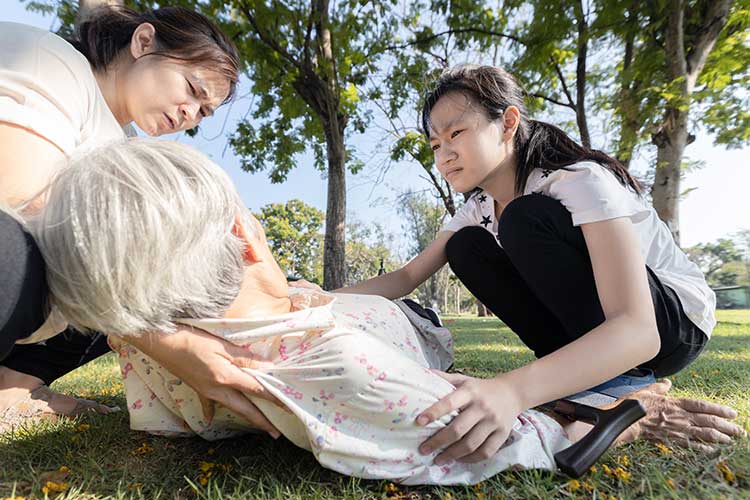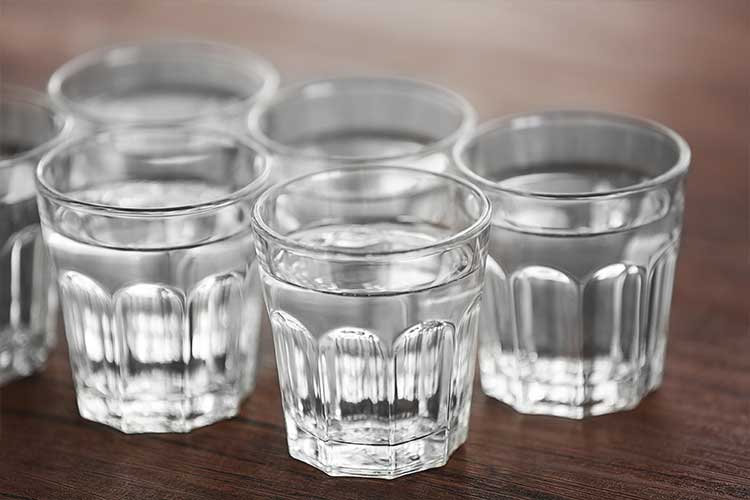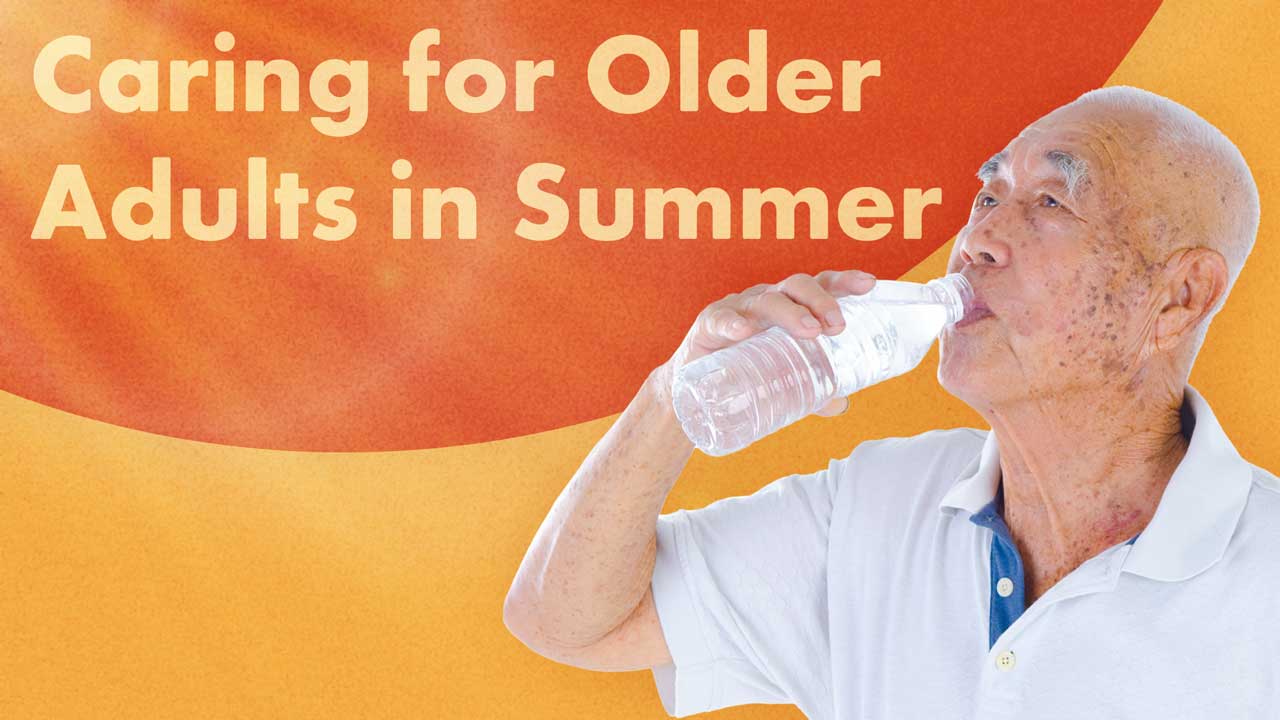In Australia, heatwaves have caused more deaths than any other natural disaster (DEA 2020).
With older adults over 65 being one of the high-risk groups for hyperthermia (along with babies and young children, pregnant people and those with certain conditions) (Better Health Channel 2022a), knowing how to appropriately care for your older clients during the warmer months is crucial.
What is Hyperthermia?
Hyperthermia is an umbrella term comprising several heat-related illnesses that are caused by disruption to homeostasis. Hyperthermia occurs when the body is unable to dissipate as much heat as it is absorbing or producing, leading to a thermoregulation failure (NIA 2022; QAS 2022).
Heat-related illnesses include heat syncope, heat cramps, heat oedema, heat exhaustion, dehydration, heat rash, worsening of existing medical conditions and heatstroke (NIA 2022; Better Health Channel 2022a).
Heatstroke is defined by a body temperature of over 40°C. It is the most serious form of hyperthermia and is a life-threatening medical emergency that may lead to multi-organ failure, disability or death. In order to prevent heat exhaustion from progressing to heatstroke, prompt treatment is essential (QAS 2022).
Up to 80% of heatstroke cases result in fatalities (Better Health Channel 2022a).
Why Are Older Adults at Increased Risk of Hyperthermia and Heat-Related Illnesses?
Older adults are more susceptible to dehydration due to changes in the body that occur with ageing, including decreased thirst sensation and decreased renal perfusion (Picetti et al. 2017).
Poor blood circulation, less efficient sweat glands and overall reduced tolerance to sudden or prolonged temperature changes are also age-related risk factors (NIH 2018; Better Health Channel 2022a).
Other reasons why older adults are more likely to experience hyperthermia include:
- Being more likely to take medications that cause fluid loss or altered thermoregulation (e.g. diuretics, some heart and blood pressure drugs)
- Having certain chronic conditions, including heart, lung or kidney disease, diabetes and mental illness
- Living alone or being socially isolated (meaning they have reduced access to heat-health messages and may have nobody around to help if symptoms occur)
- Poor hydration literacy
- Difficulty recognising dehydration symptoms
- Cognitive impairment causing forgetfulness, physical difficulty with drinking, dysphagia or communication issues (meaning the older adult is unable to express their need for water)
- Impaired mobility.
(DEA 2020; Aged Care Guide 2022; SA Health 2013)
Despite this, a 2017 study alarmingly found that dehydration was ‘frequently dismissed’ among aged care residents (Miller 2017).
Furthermore, a 2013 study found that while 38% of surveyed older adults had experienced hyperthermia symptoms during recent heatwaves, only 3% were concerned about their health (SA Health 2013).

Causes of Hyperthermia
Causes of hyperthermia include:
- Dehydration
- Being in environments with reduced airflow (e.g. poorly ventilated or confined areas)
- Sun exposure, particularly on hot days
- Being in hot and crowded environments
- Bushfires.
(Better Health Channel 2022a)
Factors that may contribute to hyperthermia include:
- High humidity
- Strenuous activity or high exertion in the heat
- Acute illness (e.g. diarrhoea, vomiting, respiratory infection)
- Poor physical fitness
- Being significantly underweight or overweight
- Alcohol
- Wearing non-breathable clothing.
(CDC 2017; NIH 2018)
Types of Hyperthermia
| Illness | Description | Symptoms | Treatment |
|---|---|---|---|
| Dehydration | A reduction of fluid present in the systemic circulation causes the heart to work harder to sustain adequate perfusion to vital organs. |
|
|
| Heat rash | Skin irritation due to excessive sweating. |
|
|
| Heat syncope | Sudden dizziness or fainting caused by vasodilation, which reduces blood flow to the brain (heat causes increased blood flow to the skin and legs). |
|
|
| Heat cramps | The tightening of muscles in the arms, legs or stomach, generally caused by a loss of salt and water during strenuous activity in a hot environment. |
|
|
| Heat oedema | Swelling in the ankles or feet caused by exposure to heat. |
|
|
| Heat exhaustion | A serious type of hyperthermia caused by loss of blood volume from excessive sweating. It may progress into heat stroke if untreated. |
|
See below |
| Heatstroke | A medical emergency where the core body temperature is more than 40°C. Body systems may begin to shut down. |
|
See below |
(Better Health Channel 2022a; NIA 2022; QAS 2022; NSW Health 2022)
Clients may also experience an exacerbation of other existing conditions. This is the most common effect of hyperthermia (Better Health Channel 2022a).
First Aid for Severe Hyperthermia (Heat Exhaustion or Heat Stroke)

In the case of an emergency, the priority is to cool the client down (Queensland Health 2021).
- Call for medical help immediately.
- Move the client from the heat source to a cool, shaded area, lay them down and keep them as still as possible.
- Remove the client’s excess clothing.
- Either:
- Place the client in a cool shower
- Spray the client with cool water from a hose, or
- Wrap the client in a cool, wet sheet and vigorously fan them.
- Use cool packs under the client’s armpits, on their groin or on the back of their neck.
- Monitor the client’s body temperature, continuing to cool them until they reach below 38°C.
- If the client is cooled too quickly, they may become hypothermic. Stop cooling the client if they shiver, feel cool to the touch or peripherally shut down.
- Give the client small sips of fluid, only if they are conscious and you are confident they can swallow properly.
- If the client is unconscious, place them on their side and clear their airway. Perform CPR if the client is unresponsive.
- Do not administer paracetamol or aspirin.
(Queensland Health 2021; QAS 2022; NSW Health 2022)
It is important to note that the symptoms of heat exhaustion and heatstroke may be similar. However, one significant difference is that a client with heatstroke may have dry skin and not be sweating (Better Health Channel 2022a).
Practical Tips for Caring for Older Adults in Summer
The following tips will help prevent clients from experiencing hyperthermia on hot days:
- Take note of the weather and take appropriate precautions if the temperature is over 30°C. Temperatures of over 37°C are particularly dangerous.
- Make sure the cooling systems in the home or facility are operating correctly.
- In addition to water, ensure other fluid options such as jelly, ice-cream or fruit juice blocks are available for clients.
- Keep curtains and blinds closed in hot weather.
- Ensure clients’ rooms are at a comfortable temperature and have adequate ventilation.
- Small amounts of fluid should be given regularly, rather than large amounts given less frequently.
- Avoid giving clients caffeinated or alcoholic beverages on hot days.
- Provide frequent, small meals. Consider cold options such as salad and fruit.
- Encourage clients to wear lightweight, loose, clothing (preferably made from natural fibres) and help them keep their skin covered if they go outside. Ensure wide-brimmed hats and sunglasses are worn.
- Discourage clients from going outside between 11am and 3pm and limit outdoor activity.
- Offer clients sponging or tepid showers.
- Review clients’ medications during summer months to determine whether there is any increased risk of hyperthermia.
- Ensure you have access to a working phone in the case of a power failure. Ensure clients’ safety alarm pendants will also work if a power failure occurs.
- Ensure metal mobility aids or equipment are kept in the shade so that clients do not get burnt.
- Check for symptoms of hyperthermia.
- Seek immediate medical help if a client deteriorates.
(DoH 2020; Better Health Channel 2022b; Baptcare 2017)

Managing and Preventing Dehydration
It’s crucial to identify and treat dehydration early in order to prevent serious complications and severe hyperthermia (Chan et al. 2018; Mayo Clinic 2021).
In fact, even dehydration equal to a loss of 2% of body weight may adversely affect physiological responses and performance (Eat For Health 2021).
Hydration is influenced by physical, mental and behavioural factors that affect the willingness and ability for people to remain hydrated (Miller 2017). A non-modifiable risk factor for dehydration is older age (Burns 2016). However, while it may not be possible to turn back time, nurses can use this information to modify their practice.
In residential aged care, it is recommended that staff perform hourly checks on clients to ensure that they have access to and are assisted with hydration (Burns 2016).
The Nutrient Reference Values for Australia and New Zealand (2021) recommend that:
- Men aged over 70 years consume 10 cups (or 2.6 litres) of water per day
- Women aged over 70 years consume 8 cups (or 2.1 litres) of water per day.
Note that this recommendation is an average, and evidently, factors such as very hot climates must be taken into account for the individual’s hydration needs (Eat For Health 2021).
Other factors that may cause a client to require additional fluids include:
- High-protein diet
- High-fibre diet
- Vomiting or diarrhoea
- Physical activity.
(Better Health Channel 2021)
Healthcare professionals must be careful to follow any additional hydration needs of the individual, for example, fluid restrictions set by specialists. It is thereby also essential to document fluid balance accurately.
Conclusion
Older adults are at increased risk of hyperthermia. Keeping your clients safe during summer is essential, as heatstroke is a life-threatening emergency.
Test Your Knowledge
Question 1 of 3
True or false: In some cases, people experiencing heatstroke will not sweat.
Topics
References
- Aged Care Guide 2022, ‘Hydration for Elderly People and the Dangers of Dehydration’, Aged Care Guide, 13 December, viewed 9 October 2023, https://www.agedcareguide.com.au/information/hydration-for-elderly-people-and-the-dangers-of-dehydration
- Baptcare 2017, Heat Safety for Older Adults, Baptcare, viewed 9 October 2023, https://www.baptcare.org.au/__data/assets/pdf_file/0021/17247/BC0717-MARCOMMS-CAC-HealthBulletin-HeatSafety-A4-ds-WEB.pdf
- Better Health Channel 2022b, Heat and Older People, Victoria State Government, viewed 9 October 2023, https://www.betterhealth.vic.gov.au/health/healthyliving/heat-stress-and-older-people
- Better Health Channel 2022a, Heat-related Illness, Victoria State Government, viewed 9 October 2023, https://www.betterhealth.vic.gov.au/health/healthyliving/heat-stress-and-heat-related-illness
- Better Health Channel 2021, Water – a Vital Nutrient, Victoria State Government, viewed 9 October 2023, https://www.betterhealth.vic.gov.au/health/healthyliving/water-a-vital-nutrient
- Burns, J 2016, ‘Patient Safety and Hydration in the Care of Older People’, Nursing Older People, vol. 28, no. 4, pp. 21-4, viewed 9 October 2023, https://www.ncbi.nlm.nih.gov/pubmed/27125939
- Centers for Disease Control and Prevention, Heat Stress Risk Factors, U.S. Department of Health and Human Services, viewed 9 October 2023, https://www.cdc.gov/niosh/mining%5C/UserFiles/works/pdfs/2017-125.pdf
- Chan, HYL et al. 2018, ‘Association Between Dehydration on Admission and Postoperative Complications in Older Persons Undergoing Orthopaedic Surgery’, Journal of Clinical Nursing, viewed 9 October 2023, https://www.ncbi.nlm.nih.gov/pubmed/29493857
- Department of Health 2020, Residential Aged Care Service: Caring for Older People in Warmer Weather, Australian Government, viewed 9 October 2023, https://www.health.gov.au/sites/default/files/documents/2020/01/caring-for-older-people-in-warmer-weather-residential-aged-care_0.pdf
- Doctors for the Environment Australia 2016, Heatwaves and Health in Australia, DEA, viewed 9 October 2023, https://dea.org.au/wp-content/uploads/2021/01/DEA-Fact-Sheet_HeatwavesWEB.pdf
- Eat For Health 2021, Water, Australian Government, viewed 9 October 2023, https://www.nrv.gov.au/nutrients/water
- Mayo Clinic 2021, Dehydration, Mayo Clinic, viewed 9 October 2023, https://www.mayoclinic.org/diseases-conditions/dehydration/symptoms-causes/syc-20354086
- Miller, CG 2017, ‘Dehydration in Nursing Home Residents: A Meta-Analysis of Causes of Dehydration, Implications, and Those Most at Risk’, Honors College, 18, viewed 9 October 2023, https://digitalcommons.acu.edu/cgi/viewcontent.cgi?article=1022&context=honors
 New
New 
